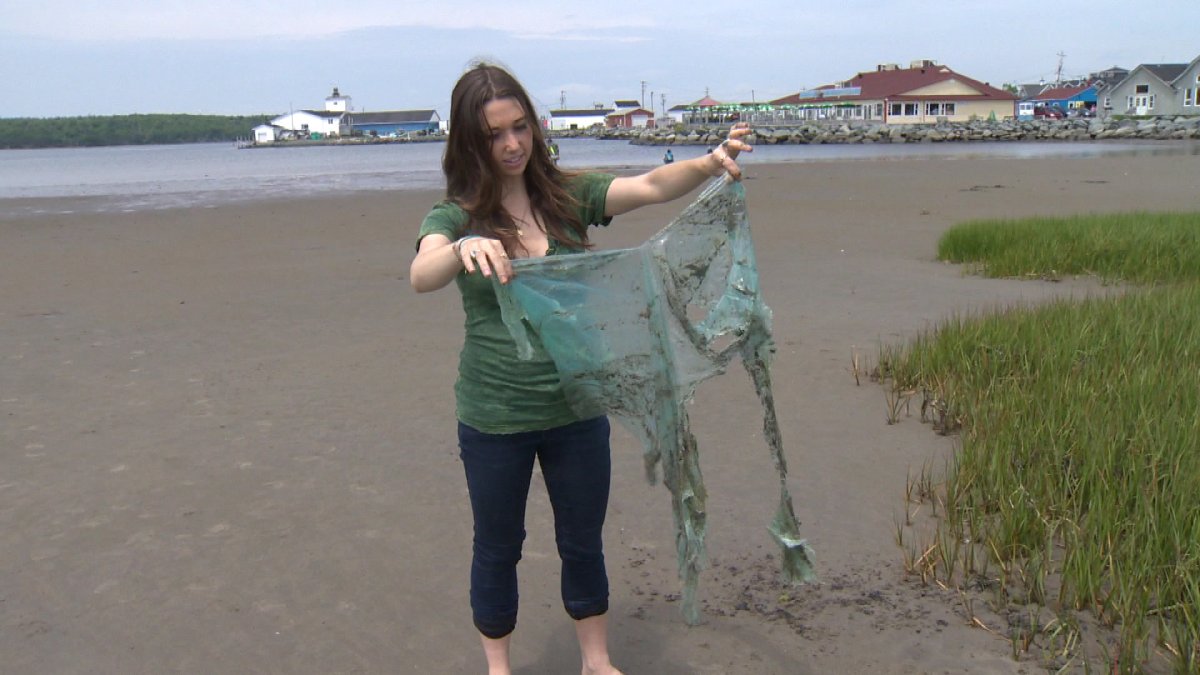EASTERN PASSAGE, N.S. – The amount of microplastics in Nova Scotian beaches is accumulating, according to research coming out of Dalhousie University that is believed to be the first of its kind in Canada.

Student Alysse Mathalon has been researching microplastics since last July. She collected sediment samples, fecal matter samples and mussels from three locations: Rainbow Haven Beach in Cole Harbour, McCormick’s Beach in Eastern Passage and the Halifax Harbour.
Mathalon counted the number of microplastics, defined as plastic less than a millimetre in size, in each sample and found a disturbing amount of microplastics.
“They have the potential to be harmful so we want to be precautionary,” she said.
More research needs to be done but Mathalon says that microplastics can be carcinogenic and can interfere with hormone regulations and cellular functions. She says that the public needs to be concerned because the long term effects of microplastics still aren’t known.
“We don’t know to what extent our body is breaking them down. We don’t know how much they’re accumulating in our bodies. We don’t know if we’re getting rid of them.”
“Plastic can absorb a lot of different contaminants. Those contaminants can make their way into the marine food chain, including into the marine food chain we access as humans,” said Paul Hill, professor of oceanography at Dalhousie University and Mathlon’s supervisor.
“They could interfere with the digestive systems in certain animals. As you can imagine, we as humans would not want to eat a bunch of large plastics and have them sitting our digestive systems,” said Hill.
- Bird flu risk to humans an ‘enormous concern,’ WHO says. Here’s what to know
- Shoppers faces proposed class action over claims company is ‘abusive’ to pharmacists
- ‘Bacterial vampirism’: Deadly pathogens attracted to human blood, study finds
- Most Canadian youth visit dentists, but lack of insurance a barrier
Mathalon says the plastic is getting into beaches from carelessly discarded plastic waste and polyester, nylon or acrylic clothing that release microplastics when they are washed.
She believes people need to re-think how they interact with plastic.
“Fifty percent of the plastic we use is a one-time use plastic and gets thrown out right after we take it off the thing we’re going to be using.”
Mathalon urges people to consider alternatives like using a paper bag instead of a plastic bag or buying all-cotton or natural fiber clothing.
“I think we went a little overboard with plastic because now we’re finding it everywhere and we don’t know what it can do.”
It’s a sentiment that Hill agrees with.
“We use plastic so much in our daily lives. We’re uncertain about what effect they might be having on the environment,” he said.
“We just need to be conscientious of how much plastic we use. Once these plastics get to the small sizes, there’s effectively no way to clean them out of the environment.”
Mathalon is submitting her research to a journal called Marine Pollution Bulletin and hopes to have it published in the fall.




Comments